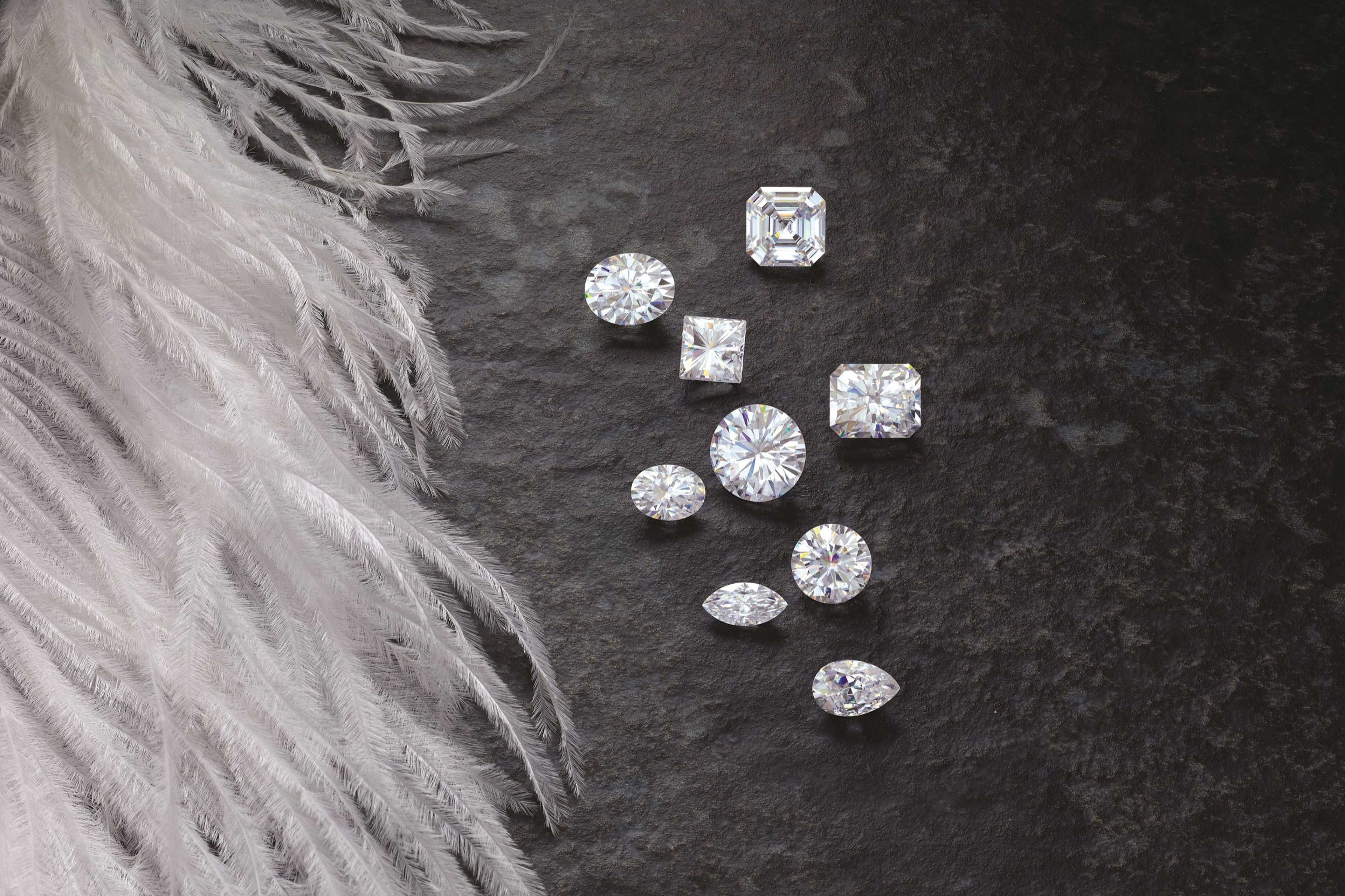Are you feeling blue because the cost of natural diamonds are way out of your league? Cheer up! You can still propose to the love of your life with eco-friendly, affordable options, like lab grown diamonds and moissanite, that look just as good as those natural beauties. Ready to learn more about them? Let’s jump right in!
History
Lab Grown Diamonds: Gem-quality, lab grown diamonds have been available since the early 1970s, but they didn’t become popular until the past several years. This is partly due to continued interest in diamonds. Prior to the 1930s, natural diamonds were featured in few engagement rings. But after taking a hit during the Great Depression, De Beers, a corporation specializing in diamond retail and manufacturing, developed an advertising tactic that made diamonds the standard stone for engagement rings.
However, only about 30% of mined natural diamonds qualify to become gems. Since there’s no limit on the supply of lab grown stones, gem-quality versions can be produced in less than a month and sold at lower prices.
Moissanite: This gem is said to be born from the stars! Why? Nobel Prize-winning chemist Dr. Henri Moissan first discovered silicon carbide, the key chemical compound in moissanite, in an Arizona meteorite crater nearly 130 years ago. He initially thought the crystals were diamonds, given their similar appearance.
However, silicon carbide is rare, and these crystals were too small to form gemstones. Much like lab grown diamonds, scientists worked to create a thermal growing process that allows silicon carbide and moissanite to be developed in laboratories. More than 25 years ago, moissanite became gemstone quality when jewelry company Charles & Colvard refined the sparkly gem. And by the late 1990s, colorless moissanite became a popular diamond alternative for engagement rings.
Chemical Composition
Lab Grown Diamonds: Even though these stones are created in laboratories, they’re technically real diamonds! They’re made of carbon and possess the same qualities as natural diamonds, including look, durability and sparkle. In fact, only trained gemologists can tell them apart with special tools that check for crystal patterns and stone impurities. With this chemical structure, diamonds score a perfect 10 on the Mohs Hardness Scale— a scale that ranks the durability of diamonds, gemstones and other minerals. The only thing that can scratch a diamond is another diamond!
Moissanite: You already know about silicon carbide, but let’s break it down a bit further. This means silicon and carbon are part of moissanite’s chemical structure. So, the gem is almost as durable and scratch-resistant as a diamond. It scores a 9.25 on the Mohs Hardness Scale, making diamonds the only gemstones to surpass moissanite in strength. The addition of silicon also makes moissanite less likely than diamonds to attract grease and dirt.
How Are They Graded?
Lab Grown Diamonds: Since they’re real diamonds, lab grown gems are graded just like natural stones. They go through a strict grading process, where each gem is evaluated on cut, color, clarity and carat weight (aka the 4 C’s). When shopping for a diamond, you’ll want to pay attention to all of these characteristics, but the stone’s cut — or how well a diamond’s flat surfaces interact with light — is said to be most important.
Moissanite: Unlike lab grown diamonds, moissanites are only rated on color, and they follow a different color grading scale than diamonds. These gems can be classified into one of three categories: colorless (D-E-F range), near colorless (G-H-I range) and faint hues of color (J-K range).
Interaction with Light
Lab Grown Diamonds: Who could resist a diamond’s spectacular sparkle? When it comes to the brilliance refractive index and fire dispersion (aka colored sparkle), diamonds score a 2.42 and 0.044, respectively. Certain diamond cuts also sparkle more than others, depending on the number and placement of their flat surfaces. Hint: A round cut stone contains nearly 60 surfaces!
Moissanite: This gem takes that lovely sparkle to another level! Moissanite actually reflects light better than diamonds, so you’ll see even more colored sparkle with these stones. They score between 2.65 and 2.69 on the brilliance refractive index and receive a rating of 0.104 for fire dispersion.
Value
Lab Grown Diamonds: These diamonds cost 30-40% less than their natural counterparts, making them a nice alternative if you’re on a budget.
Moissanite: These stones often cost 70% less than natural diamonds. There isn’t much more to say!
Have a question? We can help!
Gage Diamonds is Chicago's premier jewelry showroom and online retailer of engagement rings, wedding bands, and fine jewelry. We offer a selection of dazzling lab grown diamonds as well as Gage Select and Charles & Colvard moissanite rings.
We’re committed to helping you find the ring of your dreams. For inspiration, browse our website or set up an appointment with a member of our trusted staff at our in-person showroom.
We offer no-credit-needed financing – apply and get your approval within 24 hours!
Pay over time, because love shouldn’t wait.

